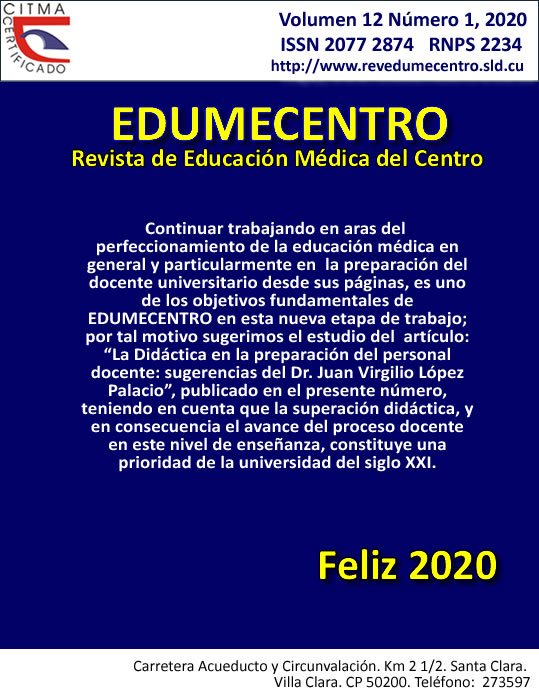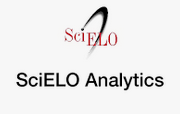The gerund questionable use in the scientific writing of health professionals
Keywords:
training, language, language arts, education, medicalAbstract
Background: in the scientific writing there are numerous inaccuracies that cause errors and amphibologies in the messages, including the incorrect use of the gerund, a questioned sign and even rejected by some researchers.Objective: to characterize the use of the gerund in the scientific writing of some health professionals.
Methods: a descriptive investigation was carried out in the Faculty of Technology - Nursing, in Villa Clara, from20 18 to the first quarter of 2019. Theoretical methods were used: analysis-synthesis and induction-deduction; Empirical ones: documentary review as a source of primary data, questionnaire survey applied to professionals and discourse analysis in the scientific articles analyzed; and mathematics for numerical data.
Results: the correct use of simultaneous and peripheral gerund was found, essentially with being; also the explanatory and ilocutive; in other situations they use it incorrectly: repeated, with subsequent action and adjective function. Some rejection was perceived towards its use in scientific documents, due to certain entrenched dogmatic conceptions, which led to questioning among researchers.
Conclusions: the need for language improvement is reaffirmed, in which the use of the gerund is encouraged as an element that brings diverse nuances to the scientific text.
Downloads
Download data is not yet available.
Published
2020-01-01
How to Cite
1.
López Gómez EJ, Cruz Camacho L, Garcés Pérez M, Medina Pérez JM, Noda Valledor M. The gerund questionable use in the scientific writing of health professionals. EDUMEC [Internet]. 2020 Jan. 1 [cited 2025 Nov. 4];12(1):111-30. Available from: https://revedumecentro.sld.cu/index.php/edumc/article/view/1415
Issue
Section
ARTÍCULO ORIGINAL
License
Los autores que publican en esta revista están de acuerdo con los siguientes términos:- Los autores/as conservarán sus derechos de autor y ceden a la revista el derecho de primera publicación de su obra, el cuál estará simultáneamente sujeto a una Licencia Creative Commons Reconocimiento-NoComercial-CompartirIgual 4.0 Internacional (CC BY-NC-SA 4.0) que permite a terceros compartir la obra siempre que se indique su autor y su primera publicación esta revista.
- Los autores pueden establecer por separado acuerdos adicionales para la distribución no exclusiva de la versión de la obra publicada en la revista (por ejemplo, situarlo en un repositorio institucional o publicarlo en un libro), con un reconocimiento de su publicación inicial en esta revista.
- Se permite y se anima a los autores a difundir sus trabajos electrónicamente (por ejemplo, en repositorios institucionales o en su propio sitio web) antes y durante el proceso de envío, ya que puede dar lugar a intercambios productivos, así como a una citación más temprana y mayor de los trabajos publicados (Véase The Effect of Open Access) (en inglés).










